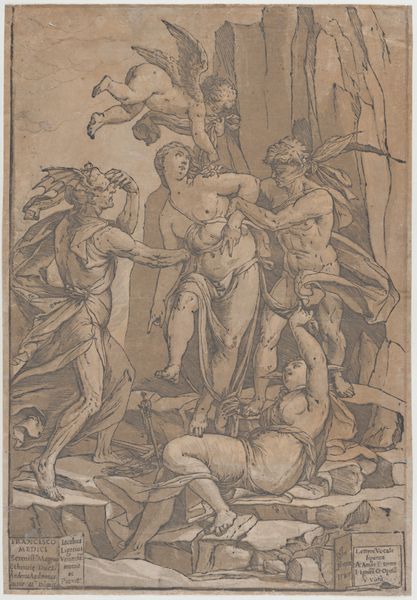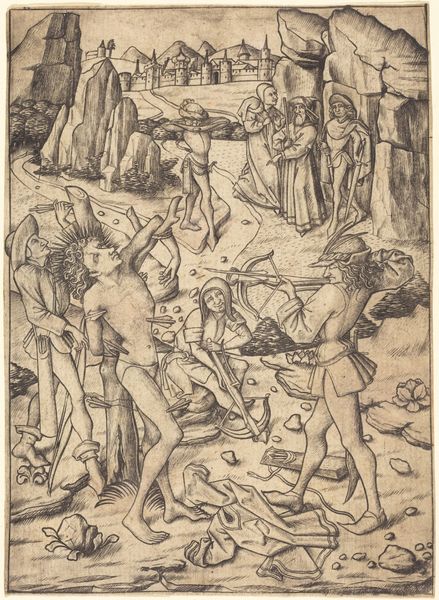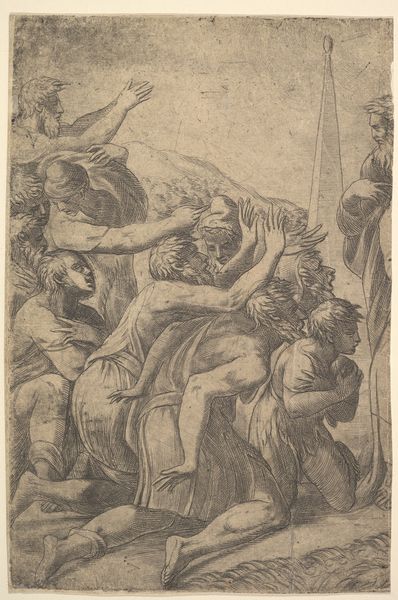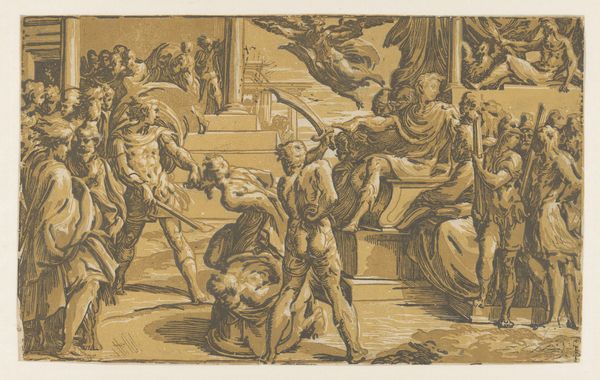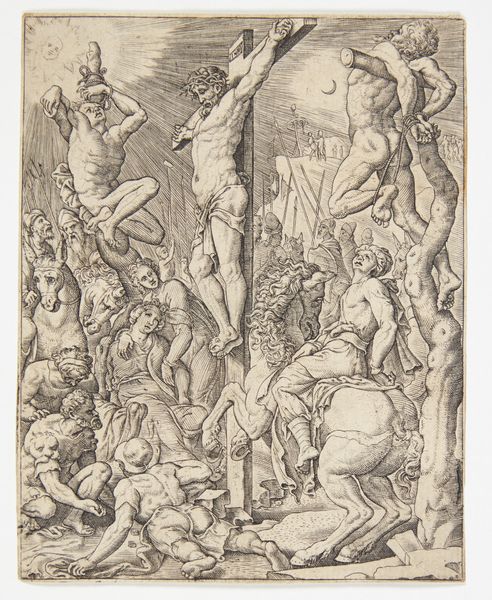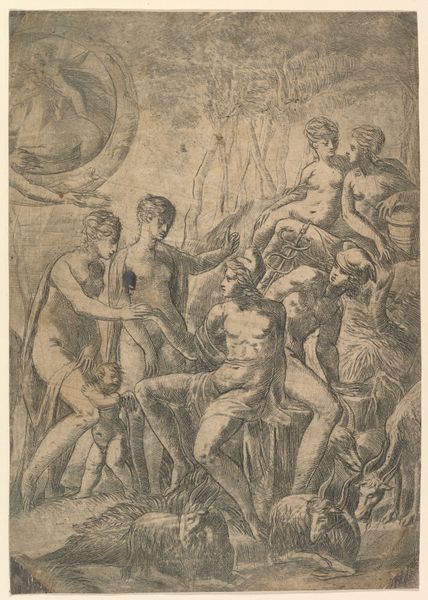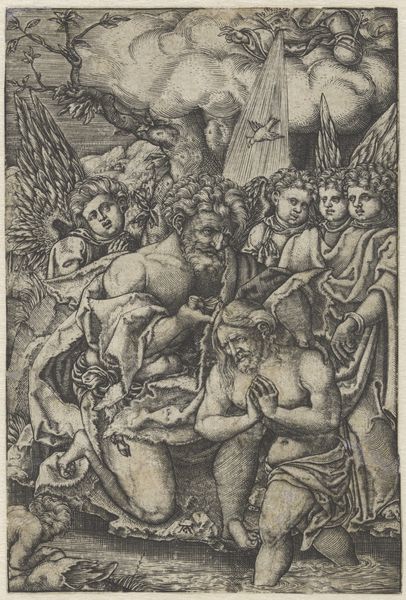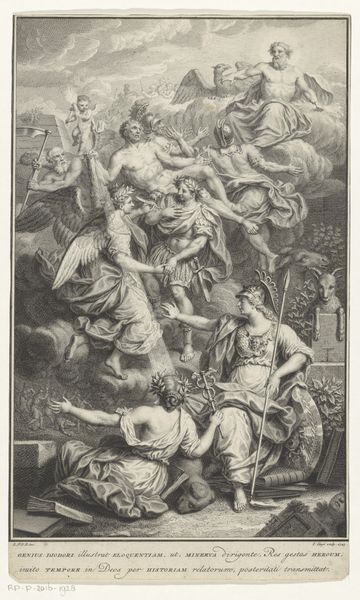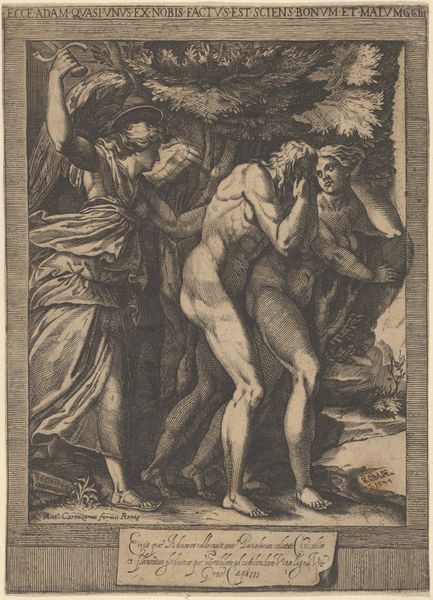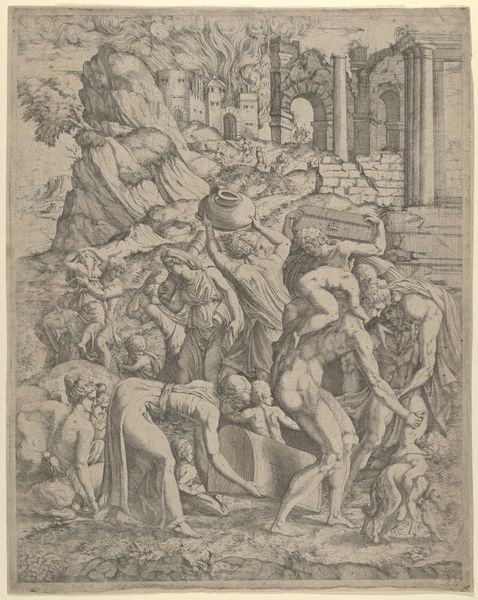
Deugd door Liefde beschermd tegen Onwetendheid, Misverstand en Verkeerde Overtuiging 1585
0:00
0:00
print, engraving
#
allegory
# print
#
mannerism
#
figuration
#
history-painting
#
engraving
Dimensions: height 477 mm, width 325 mm
Copyright: Rijks Museum: Open Domain
Editor: Here we have Andrea Andreani’s “Deugd door Liefde beschermd tegen Onwetendheid, Misverstand en Verkeerde Overtuiging,” a 1585 engraving print. The composition, with these swirling figures and dramatic tension, feels incredibly charged. What can you tell me about the meaning behind such a scene? Curator: Well, the very long title gives us a start. Remember, in 16th-century art, allegory was often used to convey complex social and political messages. So, this isn’t just a scene, it's a statement. What kind of statement do you think it is? Given the title, that is... Editor: It sounds like it’s about how love and virtue are essential for combating ignorance. The figure of Virtue being assailed while Love protects… Curator: Exactly! And the Mannerist style, with its elongated figures and dynamic poses, reinforces that sense of struggle. The print likely resonated with debates of the time – religious conflicts, perhaps, or clashes between reason and passion. Where might the print be shown or disseminated? And who gets to see it and why? Editor: Possibly in courtly circles or among educated elites? Because I can see how, even at the time, a piece like this might get censored. So it wouldn't be for public consumption, so to speak. Curator: Precisely. The Rijksmuseum is, ironically, a very safe place for it. Editor: Seeing art like this always brings such a social awareness. I now think of it as more than a mere allegory. Thanks! Curator: Likewise, the conversation has made me think about where its modern relevance lies, since social critique is never really out of style, is it?
Comments
No comments
Be the first to comment and join the conversation on the ultimate creative platform.

